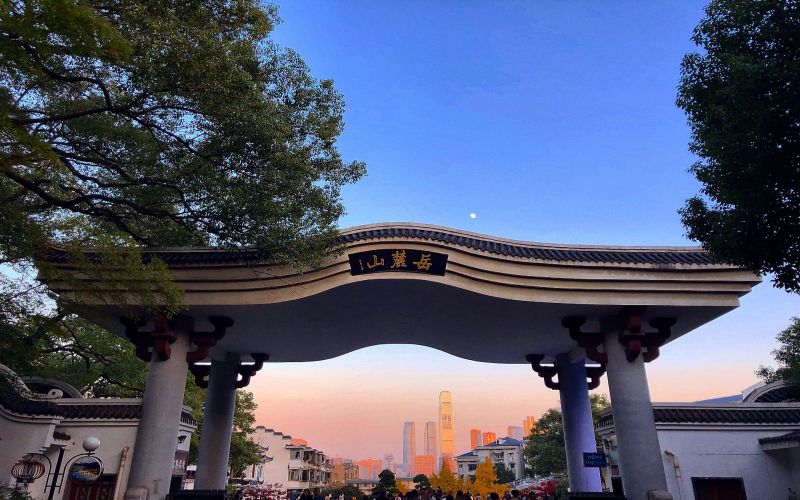Chinese Name: 岳麓山 Pronunciation: yuè lù shān
Height: 300.8 meters
Admission Ticket Fare: Free
Suggested Visiting Hours: 3-4 Hours
Mountain Tourist Area: 5.28 square kilometers
Address: No.58, Denggao Road, Yuelu District, Changsha, Hunan Province
Best Travel Season: Spring, Autumn and Winter. (Visitors can enjoy the most magnificent scenery of the red maples from mid-November to the beginning of December. )
| Contents | Price |
| Round Trip Cable Car | 50 yuan |
| Cable Car of Uphill Direction | 30 yuan(one-way) |
| Cable Car of Downhill Direction | 25 yuan(one-way) |
| Sightseeing Bus | 20 yuan |
| Note: Transportation facilities above are voluntary consumption. | |
1. The scenic area is free to the public except for Yuelu Academy which charges 40 yuan per person.
2. During the COVID-19 pandemic, the Yuelu Academy limits the tourist’s size to 3000 and tourists need to make appointments 3 days in advance.
| Contents | Time |
| Mountain Area | 24 hours for all year round |
| Yuelu Academy | 8:00 - 17:30 |
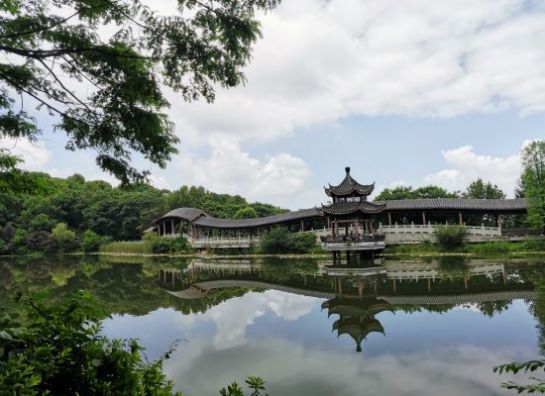
Located on the west coast of the Xiangjiang River, Mt.Yuelu is the last peak of 72 peaks of Nanyue (South Mountains) of China. Although with a relatively low altitude of 300.8 meters, Mt.Yuelu is one of the core scenic spots of Mt. Yuelu Scenic Spot, which has been rated as a national AAAAA scenic area in 2012.
Mt.Yuelu is a huge “Botanical Museum”, in which there are 977 different species of plants. Among those plants, the maple trees are the majority. Every autumn, the maple leaves will tint the Mt.Yuelu red from the bottom to top. Mt.Yuelu is also famous for its cultural relics. There are 15 provincial-level cultural spots on the mountain including the Aiwan Pavilion, Yuelu Academy, the ancient Lushan Temple and other attractions.
In an area of 5.28 square kilometers, the Mt.Yuelu integrates the cultural essences of Buddhism, Taoism and Confucianism. During the past thousands of years, many philosophers of those three mainstream ideologies of ancient China had preached here. And until this day, the Mt.Yuelu attracts over 3 million tourists every year.
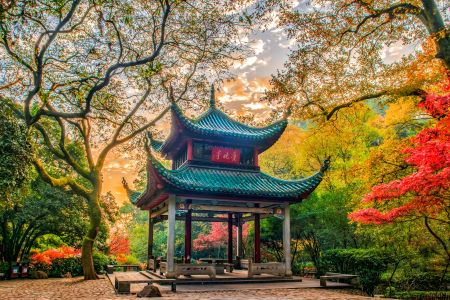
As one of the four great pavilions of China, Aiwan Pavilion was built during the reign of Emperor Qianlong of the Qing Dynasty (1792). The pavilion was originally named in Hongye Pavilion or Aifeng Pavilion, both of which were related to the spectacular red maple sight on the mountain.
In 1969, the cursive script version of Chairman Mao’s t poetry Qin Yuan Chun---Changsha was engraved on the ceiling of the pavilion, the plaque of Aiwan Pavilion was also written by Chairman Mao.
Aiwan Pavilion is also a symbol of the friendship between Changsha and Kagoshima of Japan. There is a duplicate pavilion in Kagoshima.
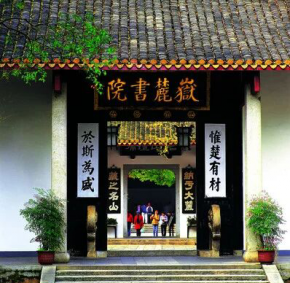
Yuelu Academy was built in Kaibao 9th year in the North Song Dynasty (A.D.976) and ranked as one of the four best academies at that time. Nowadays, as a campus of Hunan University, it has acted as a teaching academy of Confucianism almost without interruption for more than one thousand years.
The academy is also famous for its beautiful surroundings and quaint architecture style. The main body of the academy was rebuilt in the Ming and Qing Dynasties and has been well-preserved.
In contemporary China, the academy played an important role on the revolutionary process of China, and a group of revolutionists such as Mao Zedong, Cai Hesen, li Da had been living or studying here.
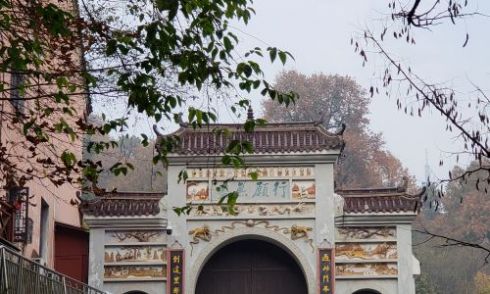
Built in Taishi four years of the Western Jin Dynasty (A.D.976), the Lushan Temple has a history of over 1700 years till now. Lushan Temple is the earliest relic that Buddhism entering Hunan Province. It is now a key cultural relics protection unit in Hunan Province and the resident of Hunan Buddhist Association.
Destroyed by the Japanese army in 1944, only the mountain gate and Depositarry Of Buddhist Texts are preserved. The hall of Lushan Temple has been restored, and the Thousand-Hand Guanyin is solemn and kind. The temple is composed a mountain gate, Maitreya Hall, Daxiong Hall, Guanyin Pavilion, and Monastic Dining Hall.
In 1983, the State Council identified the temple as the national key Buddhist relic.
Start from the South Gate of Mt.Yuelu→Aiwan Pavillion→Sheli Stupa→Tomb of Liu Daoyi→Banshan Pavillion→Lushan Temple→ Long Corridor→Baihe Spring→Yunlu Palace→Feilai Stone→Shipo Lake→South Gate
Start from the East Gate of Mt.Yuelu→Ropeway→Jimu Mountain Villa→Yuwang Stele→Long Corridor→Xiangguling and Bird Singing Forest→-Lushan Temple→Baihe Spring→Tomb of Jiang Yiwu→Tomb of Liu Daoyi→Aiwan Pavillion→South Gate
Take bus Dakecheng 1, Dakecheng 2, Dakecheng 3 and get off at Yuelushan Bei Station(North of Mt.Yuelu)
Take line 2 or line 4 and get off at Yingwanzhen Station, then walk west for about 5 minutes.
Chinese: 请带我去岳麓山。English: Please take me to the Mt.Yuelu.
If you go to the Mt.Yuelu from the Changsha Railway Station, it takes about 30 minutes (25 yuan).
If you go to the Mt.Yuelu from the Changsha South Railway Station, it takes about 52 minutes (65 yuan).
If you go to the Mt.Yuelu from the Changsha Huanghua International Airport, it takes about 60 minutes (100 yuan).
